 Free Neurolens Evaluation
Your Solution to Eye Misalignment
Free Neurolens Evaluation
Your Solution to Eye Misalignment
Neurolens evaluations are currently offered at our Brookfield and Elm Grove locations.

What are Neurolenses?
Neurolenses are a revolutionary type of eyewear designed to address a common yet often overlooked problem: eye misalignment. Traditional eyeglasses primarily correct refractive errors such as nearsightedness or farsightedness. What sets Neurolenses apart is their ability to provide varying degrees of prismatic correction at different distances.
Even small misalignments between the eyes can lead to significant discomfort, especially in our digital-heavy world. Neurolenses incorporate a unique, contoured prism design to alleviate eye strain and other symptoms associated with digital vision syndrome. By reducing the strain on the visual system, Neurolenses can help alleviate a wide range of symptoms including headaches, neck pain, eye strain and dry eye sensation.
Symptoms of Eye Misalignment
 Headaches
Headaches Eye Strain
Eye Strain Neck + Shoulder Pain
Neck + Shoulder Pain Dizziness
Dizziness Dry Eyes
Dry Eyes Light Sensitivity
Light Sensitivity
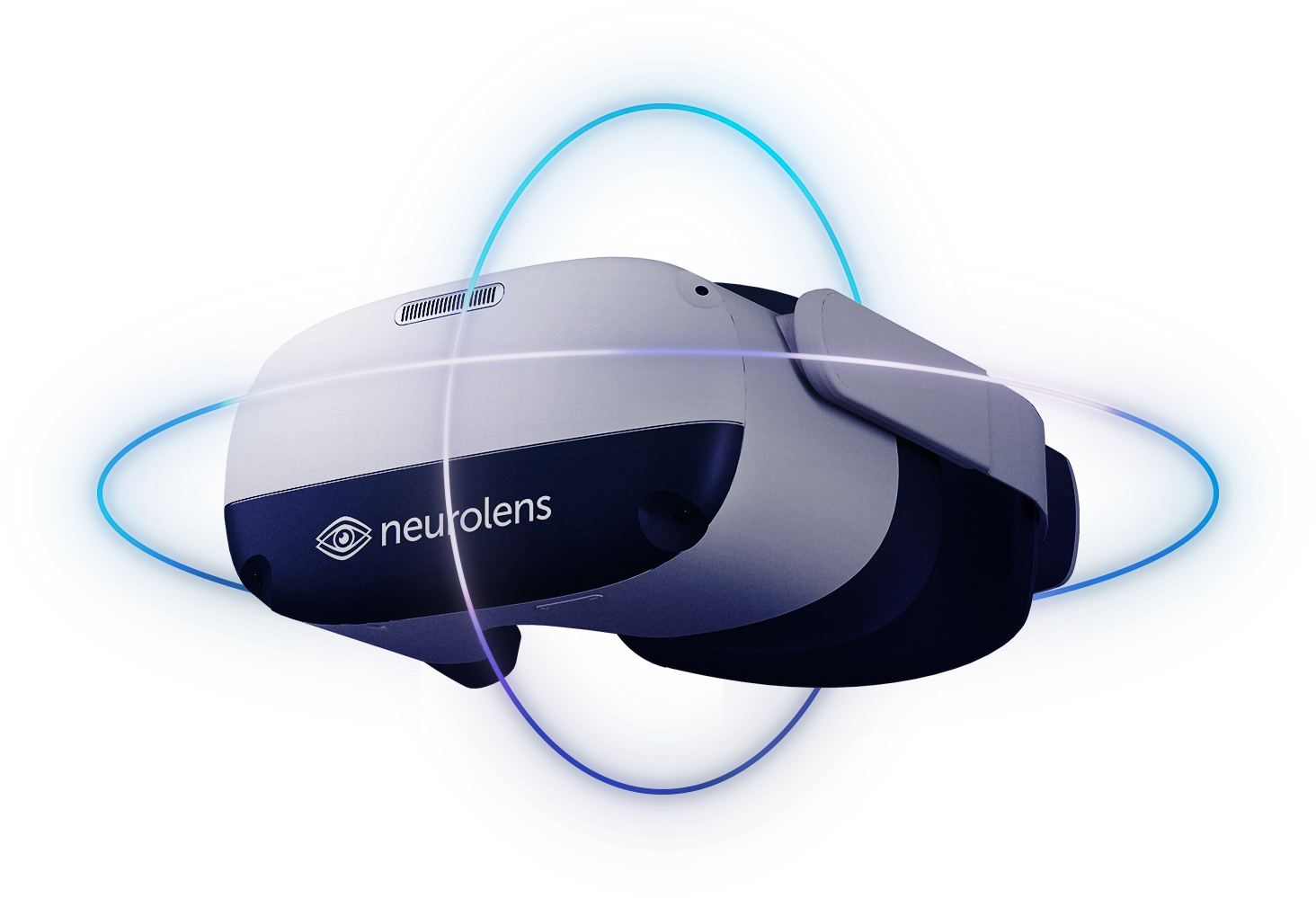
How It Works
Cutting-Edge VR Technology for a 360 Experience
Neurolens N3 is an advanced eye measurement system utilized by eye care professionals. N3 uses a vast database of over ten billion data points on patient visual behavior, compiled over more than a decade of successful patient outcomes.
N3 offers a unique, interactive experience for patients, combining education with precise measurements. This innovative system allows eye care providers to quickly and accurately measure eye misalignment with exceptional precision - down to a fraction of a prism diopter.
4 Major Benefits of Neurolens Backed by Scientific Findings
Study Overview: Neurolens Impact on Reading Speed
“At 30 minutes, Neurolens users improved by 10 words versus 5.67 for the control group. After one week, the difference widened to 27.83 words (Neurolens) versus 15.90 (control).”
Methodology:
This study compared Neurolenses to control lenses, involving 45 young adults (23 Neurolens, 22 control). Using the Wilkins Rate of Reading Test, reading speed was measured at baseline, 30 minutes after receiving glasses and at 7 and 35 days post-dispensing. The study evaluates both immediate and long-term effects of Neurolenses on reading speed.
Results and Implications:
While both groups showed improvement, the Neurolens group demonstrated significantly greater increases in reading speed. At 30 minutes, Neurolens users improved by 10 words versus 5.67 for the control group. After one week, the difference widened to 27.83 words (Neurolens) versus 15.90 (control). This improvement was maintained for 35 days. Neurolenses provide significant and sustained improvement in reading speed, suggesting potential benefits for productivity and digital well-being.
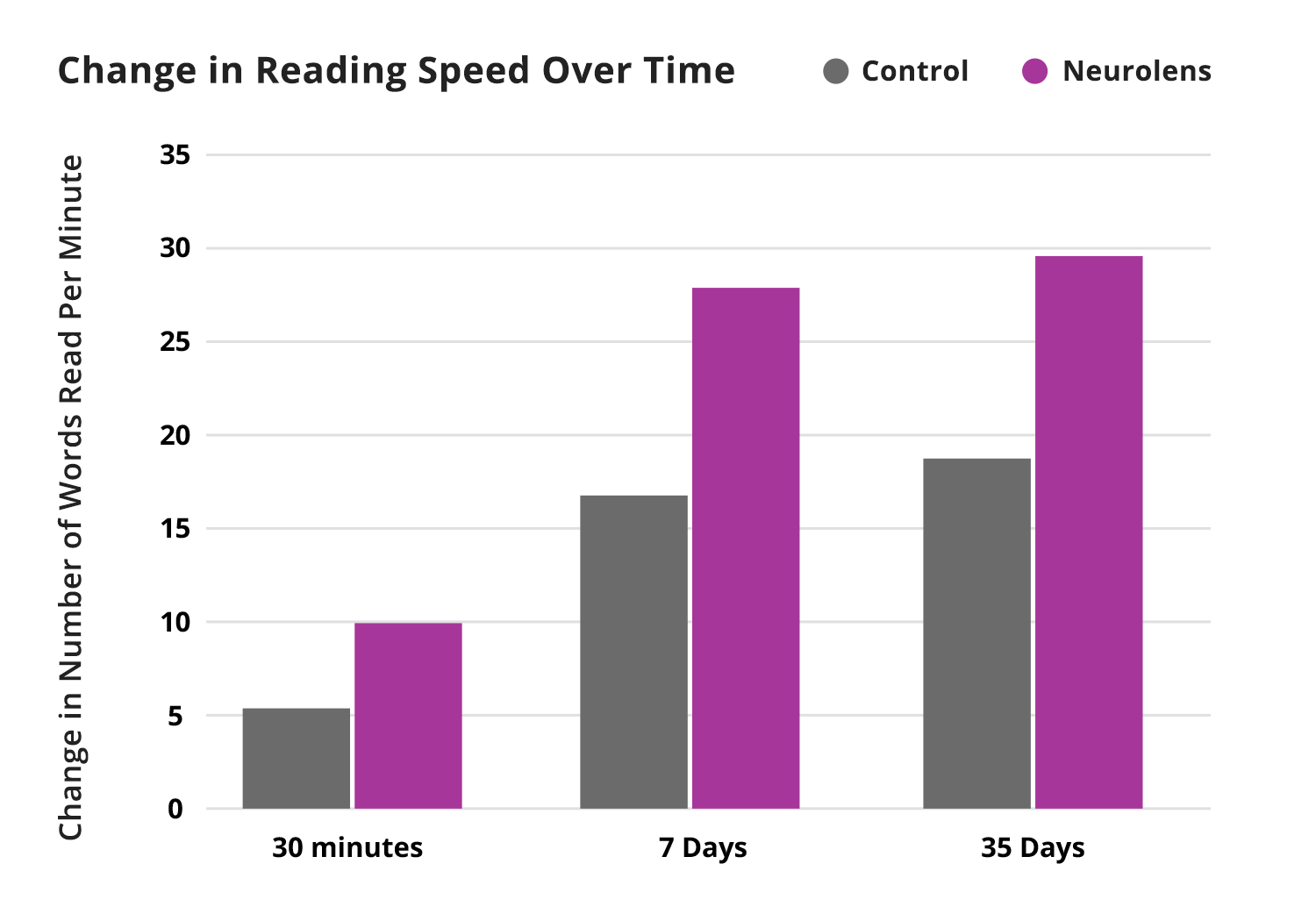
Study Overview: Neurolens Impact on Headache Symptoms
“When compared to pharmacological interventions like Aimovig, Botox and Topamax from previous studies, Neurolenses demonstrated comparable symptom relief based on HIT-6 scores.”
Methodology:
This double-masked, randomized study compared Neurolenses to control lenses in reducing headache symptoms. The study used the HIT-6 (Headache Impact Test) questionnaire to measure symptom changes. Participants wore either Neurolenses or control lenses for 20-40 days. The study evaluated the effectiveness of Neurolenses in treating vision-related headaches and digital eye strain symptoms.
Results and Implications:
Neurolenses showed statistically significant improvement in headache symptoms compared to control lenses (p = 0.01). One in two individuals reported a clinically significant reduction in symptoms (>2.5-point reduction on HIT-6) after wearing Neurolenses. When compared to pharmacological interventions like Aimovig, Botox and Topamax from previous studies, Neurolenses demonstrated comparable symptom relief based on HIT-6 scores. The Neurolens process offers an effective method to detect, diagnose and treat patients with vision-related headaches and digital eye strain, providing an alternative to pharmacological treatments.
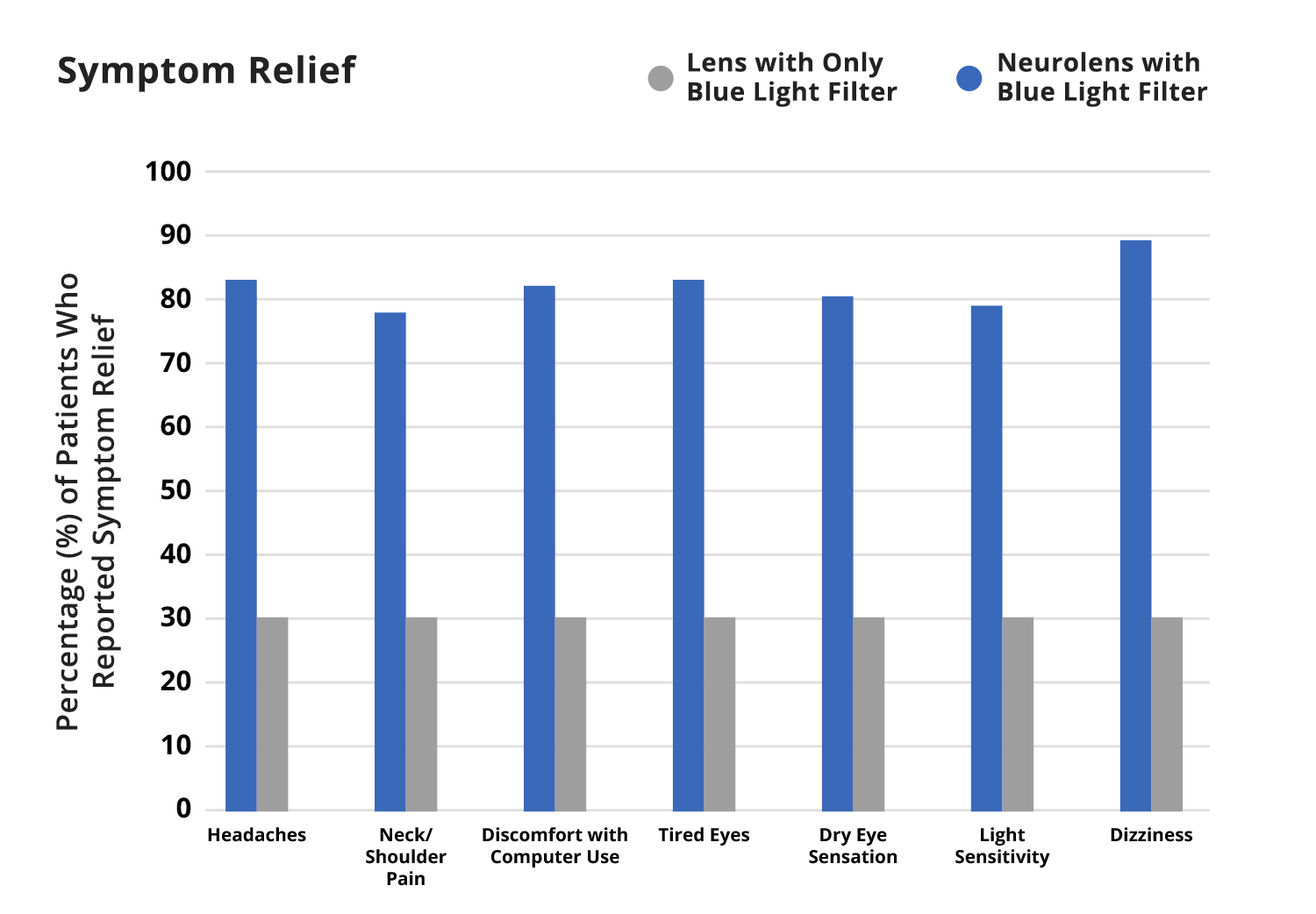
Study Overview: Neurolens Impact on Digital Vision Syndrome
“Specifically, 83.4% reported improvement in headaches, 77.8% in neck pain and 82-84% in eye tiredness or discomfort with computer use.”
Methodology:
This study examined the effectiveness of Neurolenses in treating Digital Vision Syndrome (DVS) compared to standard lenses with blue light filters. The research involved a comprehensive analysis of DVS pathophysiology and a comparison of symptom relief between Neurolenses with blue light filters and standard lenses with only blue light filters. Patient surveys were collected after 60 days of Neurolens wear from practitioners across the country.
Results and Implications:
Neurolenses with blue light filters showed significantly higher symptom relief compared to standard lenses with only blue light filters. Over 80% of Neurolens wearers reported relief from various DVS symptoms, compared to about 30% for standard blue light filter lenses. Specifically, 83.4% reported improvement in headaches, 77.8% in neck pain and 82-84% in eye tiredness or discomfort with computer use. Neurolenses feature customizable, contoured prisms and options for blue light filters, addressing both eye alignment issues and providing protection from blue light.
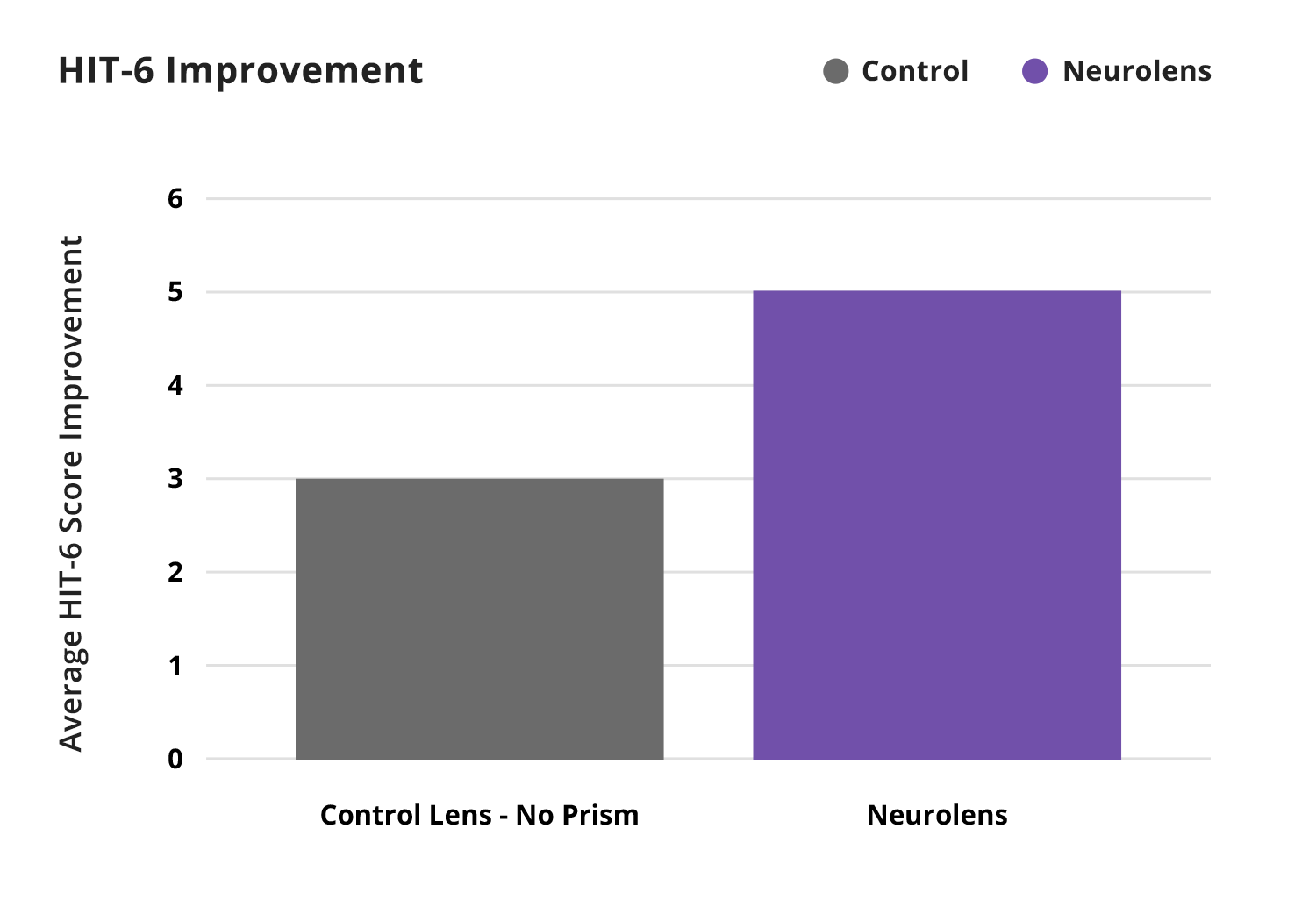
Study Overview: Impact of Small Prism Corrections on Visual Comfort
“For prism corrections ≤2PD, the improvements were slightly higher: 86% for headaches, 77% for neck pain and 80-83% for eye tiredness and discomfort with computer use.”
Methodology:
This study examined the effectiveness of small prism corrections (≤1PD and ≤2PD) using Neurolenses in treating Digital Vision Syndrome (DVS) symptoms. The research utilized the Neurolens Measurement Device, Gen 2 (NMD2) for accurate eye alignment measurements. Patient surveys were collected after 60 days of Neurolens wear from multiple clinical practices across the country.
Results and Implications:
For prism corrections ≤1PD, 84% of patients reported improvement in headaches, 76% in neck pain and 81% in eye tiredness or discomfort with computer use. Similar improvements were observed for both base-in and base-out corrections. For prism corrections ≤2PD, the improvements were slightly higher: 86% for headaches, 77% for neck pain and 80-83% for eye tiredness and discomfort with computer use. Even small prism corrections can provide significant relief from DVS symptoms.
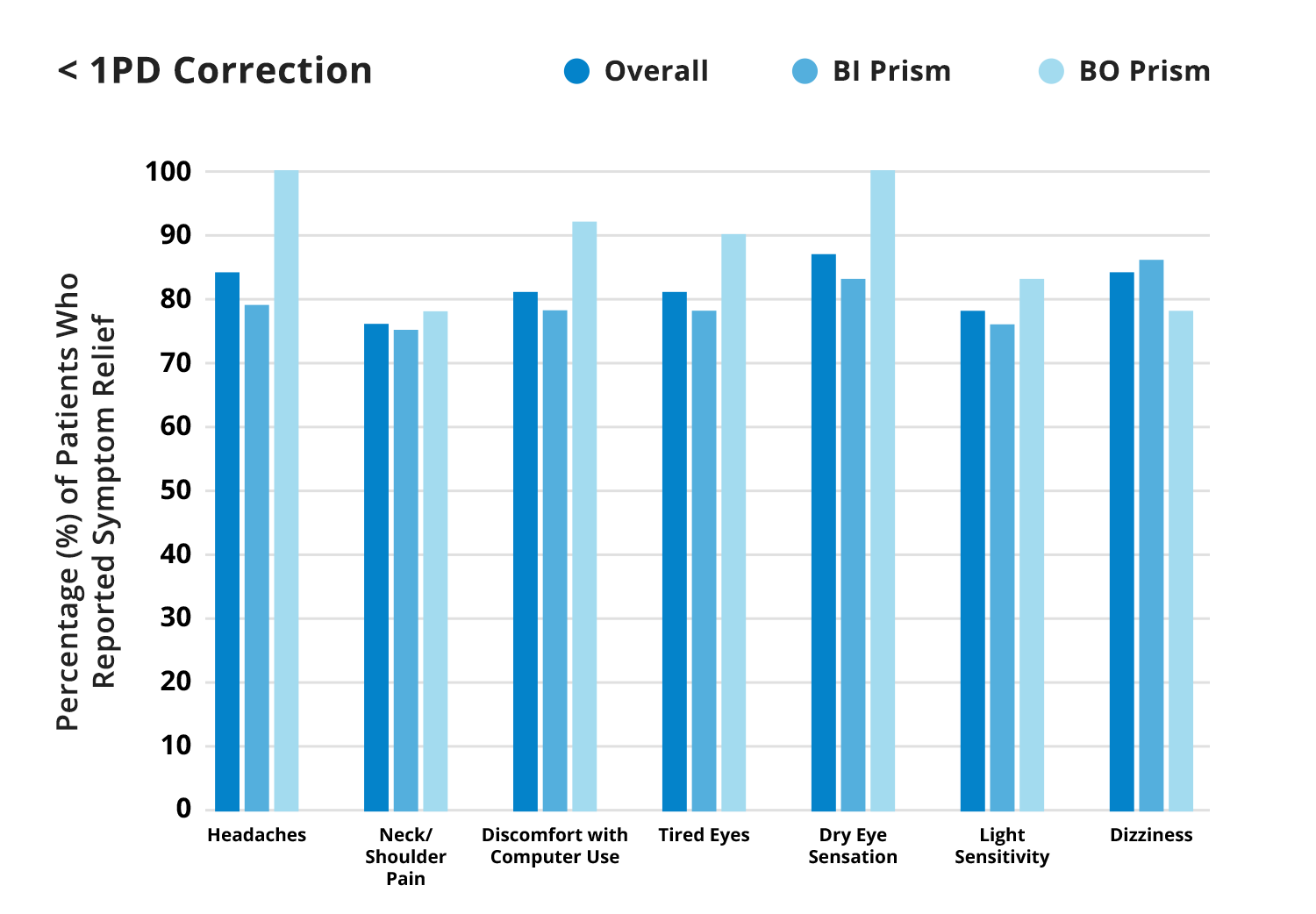
Experience N3 by Neurolens
Book your eye exam with Wisconsin Vision and ask about the Nuerolens! You’ll receive a thorough evaluation and personalized guidance on the potential advantages of Neurolenses. Schedule your appointment now to start your journey toward clearer, more comfortable vision! *Neurolens is currently offered at our Brookfield and Elm Grove centers.